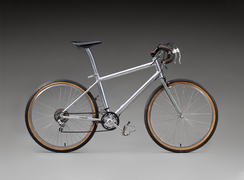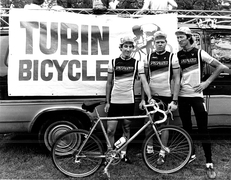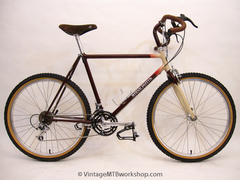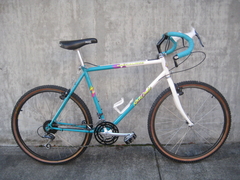Drop-bars & MTB
Most early racers were comfortable with drops: they're aero, have more hand positions, easier to shift fore and aft for climbing, were easily available, looked cool and racers were used to winning with them. Yet, MTBs are defined as having flat bars. However, if John Tomac, the winningest racer in the history of MTB, was able to podium dozens of times on downhill courses using only drop-bars, it's worth allowing them.

1978 Cunningham CCPROTO. All Aluminum. Probably used SR Sakae Road Champion handlebars at ~420mm, which he spec'd on later Indian builds. Weight: 24 pounds.
sfomuseum

1984 Specialized Team Stumpjumper 1) being held by Dave McLaughlin, who secretly swapped the flat bars for drops just before the race domesticbikes.

1987 Steve Potts. Potts custom builds often installed wide flared drops (575mm) for discerning customers who wanted the best of both worlds vintagemtbworkshop.

1988 Bruce Gordon Rock 'n Road. This is a pure cyclocross bike and the forerunner of modern gravel bikes. Flared Nitto bars, probably 440mm wide.
brucegordoncycles

1989 Specialized RockCombo. Perhaps the first mass produced drop bar MTB. Specialized had the right idea, but nobody wanted the combo. Yet. classiccycleus.